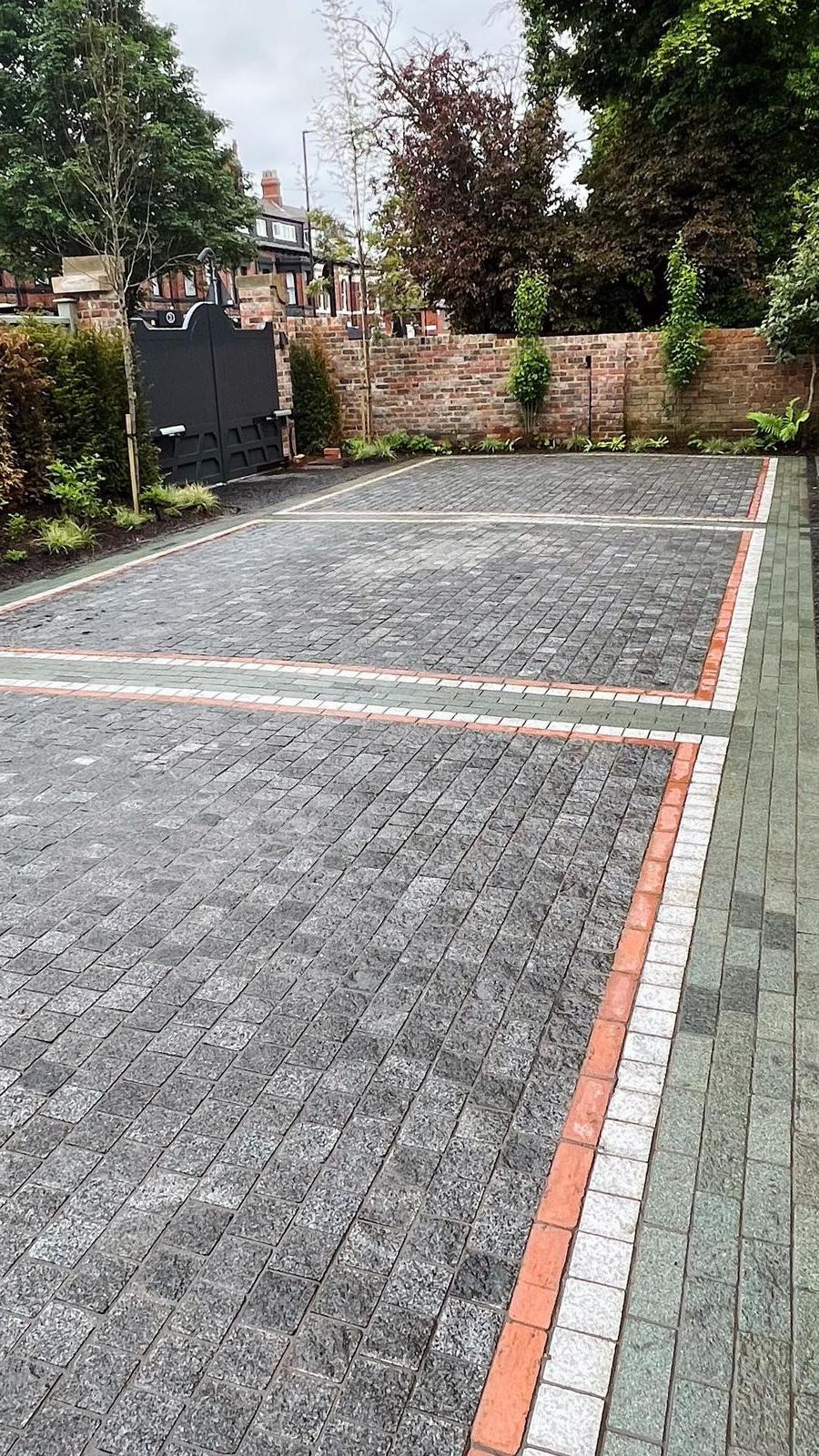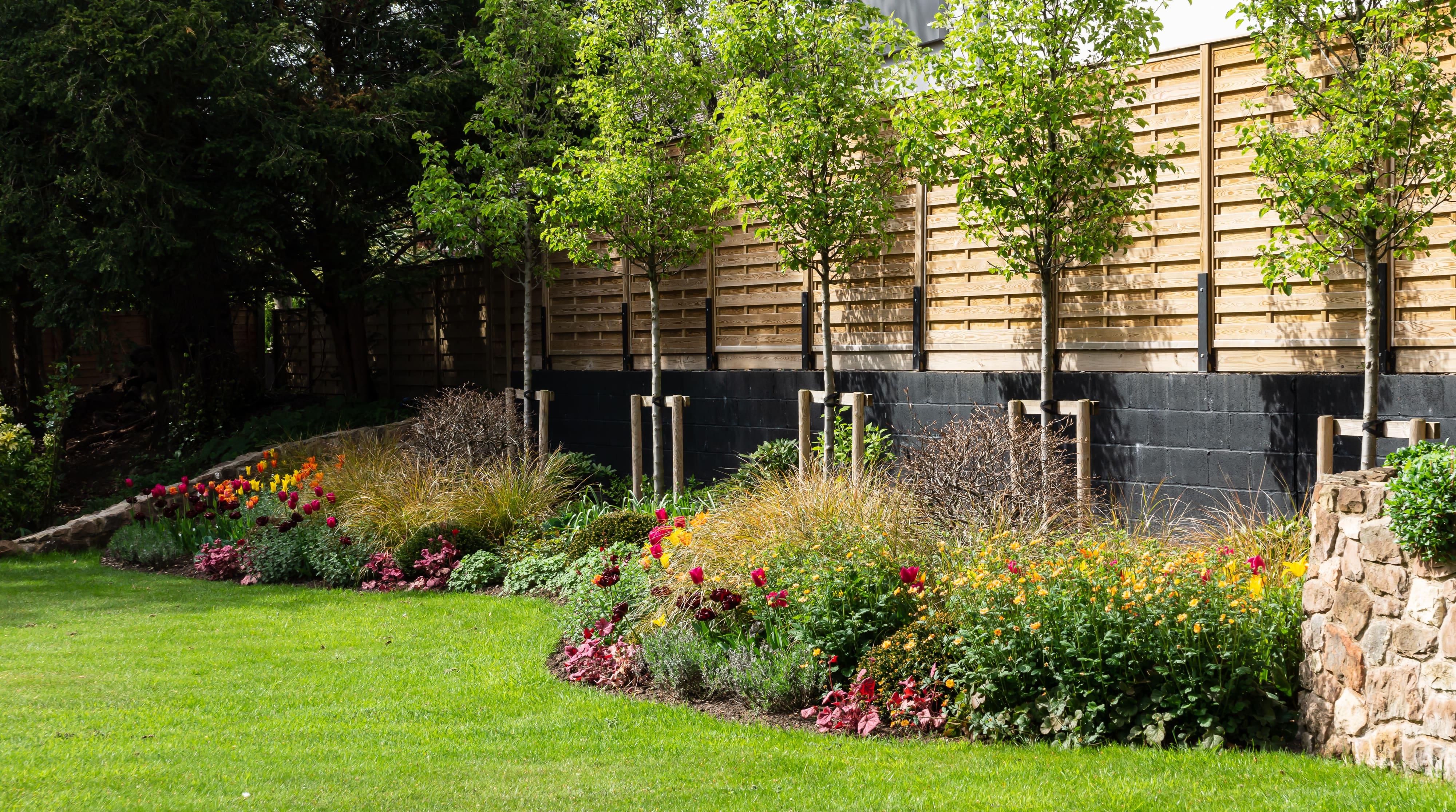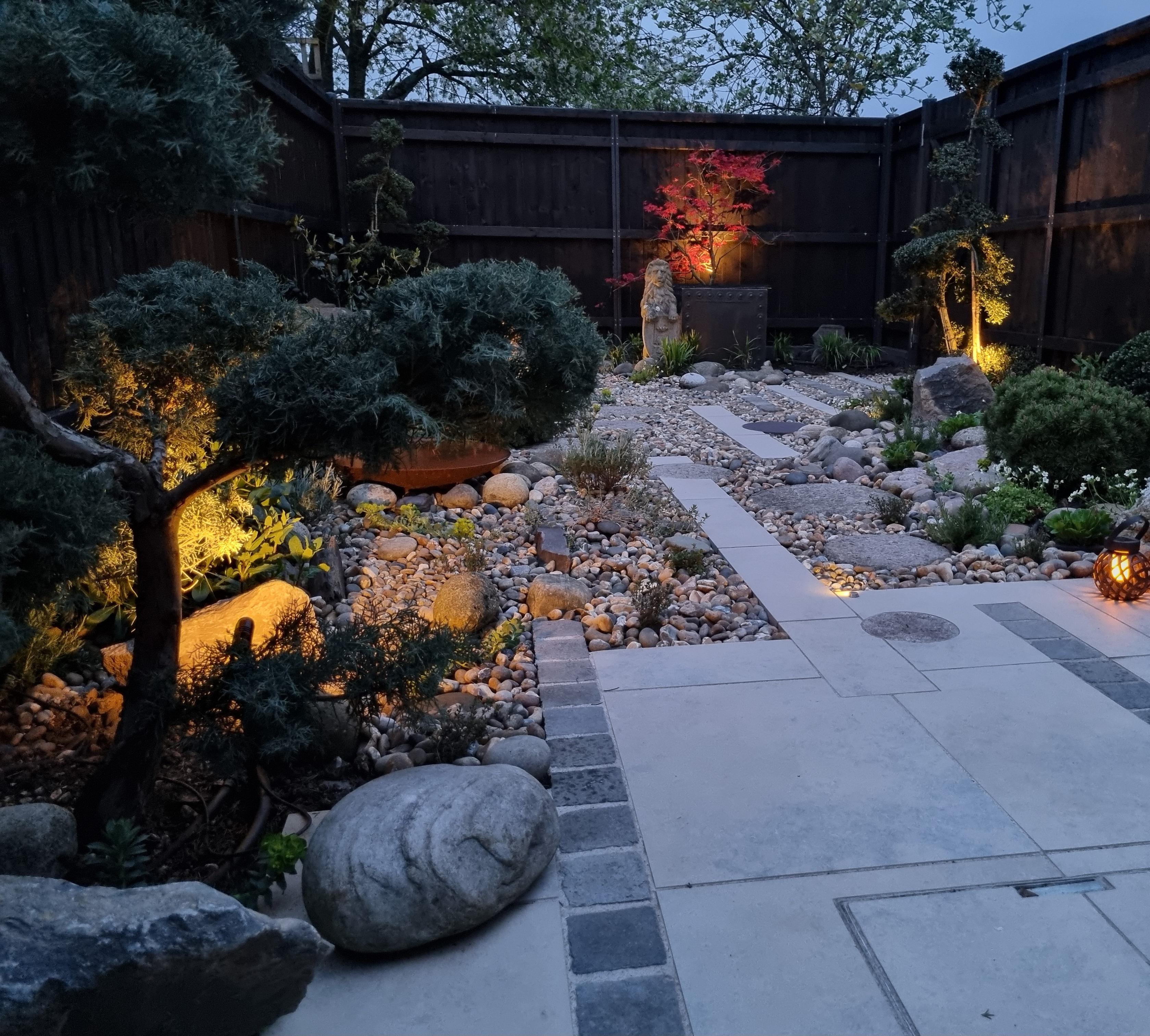
Do I Need Planning Permission For A New Garden?
Before you begin any landscaping project, it’s wise to check whether or not you need planning permission for any part of the scheme. If your property is classed as listed, then you will need to apply to the authorities before making any changes to your garden.
But even if your home is not listed, you may be surprised to learn that paving your front garden, installing certain structures, changing levels or changing the height of your garden fence, or felling trees, could well need planning permission. And of course every landscaping project must comply with CDM (2015) regulations and with building regs.
Let’s take a closer look…
Planning Permission For A Driveway With Dropped Kerb
A dropped kerb, also know as residential vehicle access crossings, allow cars and vans to drive across a highway verge or footpath in order to get to a property. Installing these crossings involves lowering the kerb and strengthening the path or verge so that it can take the weight of a vehicle. If you are planning on creating vehicle access to your front garden, you absolutely do need planning permission from your local council. In addition, the works will be carried out by a council appointed contractor at your expense.
Paving A Front Garden
In 2008, new planning rules were introduced governing the use of hard landscaping materials in a front garden. The reason being that an increase in the number of people paving front gardens to create driveways was increasing the risk of flooding in certain areas.
The Planning Portal tells us that you will not need planning permission if a new or replacement driveway uses permeable surfacing, or, if the garden is designed so that rainwater can be directed onto a lawn or border where it can drain naturally.
If however, the surface to be covered is more than five square metres AND you wish to use impermeable paving, then you will need to apply for planning permission.
A good garden designer and/or landscaper will be able to advise you on the best materials to use in your front garden. Ideally they will allow water to pass through freely, eg gravel, permeable paving or porous asphalt and be suitable for your intended use.

Installing A Garden Room
Garden rooms, along with sheds, playhouses, greenhouses and garages are classed as outbuildings and there are a set of rules that determine whether or not you need to seek planning permission and/or a buildings regulation application.
These rules can vary from region to region so please check with your local council before starting work. Ideally you should be looking at planning permission at the garden design stage.
In general, outbuildings are considered to be permitted development - i.e. not needing planning permission, subject to the following conditions
- No outbuilding on land forward of a wall forming the principal elevation.
- Outbuildings and garages to be single storey with maximum eaves height of 2.5 metres and maximum overall height of four metres with a dual pitched roof or three metres for any other roof.
- Maximum height of 2.5 metres in the case of a building, enclosure or container within two metres of a boundary of the curtilage of the dwellinghouse.
- No verandas, balconies or raised platforms (a platform must not exceed 0.3 metres in height)
- No more than half the area of land around the "original house"* would be covered by additions or other buildings.
- In National Parks, the Broads, Areas of Outstanding Natural Beauty and World Heritage Sites the maximum area to be covered by buildings, enclosures, containers and pools more than 20 metres from the house to be limited to 10 square metres.
- On designated land* buildings, enclosures, containers and pools at the side of properties will require planning permission.
- Within the curtilage of listed buildings, any outbuilding will require planning permission.
Changing The Level Of A Garden
If you wanted to raise or lower the level of your garden by more than 30cm, you will need to seek planning permission. This is because such a significant change could have a dramatic impact on rainwater management. You could end up flooding your neighbours’ property.
Fences and Walls
Fences do not normally need planning permission provided they are not excessively high. If your fence or wall is next to a highway, it should not exceed one metre in height. Elsewhere, the maximum is two metres from ground level.
If the property is listed, you will need planning permission to make any changes to a fence or wall. Likewise, in a conservation area you should always seek advice before altering fences, walls or hedges.
On some developments, such as modern housing estates, there may be an article four direction prohibiting you from altering fences walls and gates. Please be sure to do due diligence before starting your landscaping project.
Trees
Some trees, even those in privately owned domestic gardens are subject to tree preservation orders. That means that you will written consent from the local planning authority to make any changes to the tree. That includes, felling, topping, lopping, uprooting, damage roots or destruction.
You can find out if a tree has a preservation order on it by looking at your council website or by contacting your local planning department.
Image Credit: APL Award Member - Lupin Gardening Ltd

Help Navigating The Planning Process
Feeling overwhelmed? Don’t be. A reputable garden designer or landscaper will be able to provide you with what you need to simplify the planning process. Layout plans, materials specifications and schedules explaining what is to be done and how the work will be carried out will help planning officers to make a swift and informed decision about your project.
If you would rather avoid seeking planning permission, a good garden designer or landscaper will be able to help you devise a plan that should satisfy planning conditions. However, whatever you decide to build in your garden MUST comply with building regulations and with CDM (2015) regs, for your own safety and the safety of anybody using the garden.

Find a reputable landscaping professional
Our expert landscapers/garden designers and professional gardens understand local regulations and planning permissions, ensuring a smooth process from start to finish. Let us advise and create a beautiful garden tailored to your needs.
Image Credit: Adam Vetere Landscapes and Design
